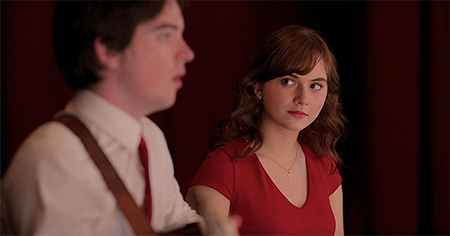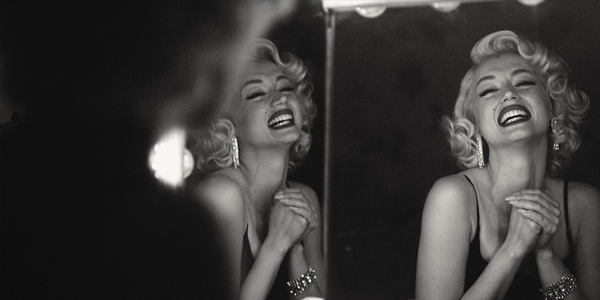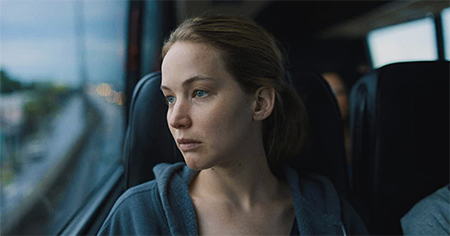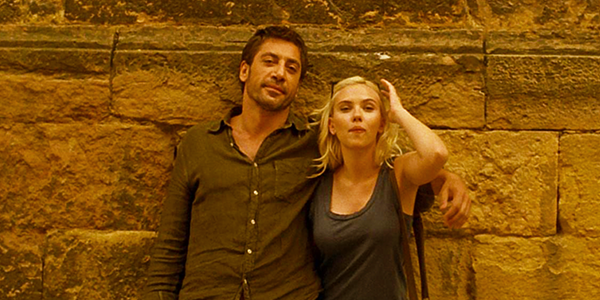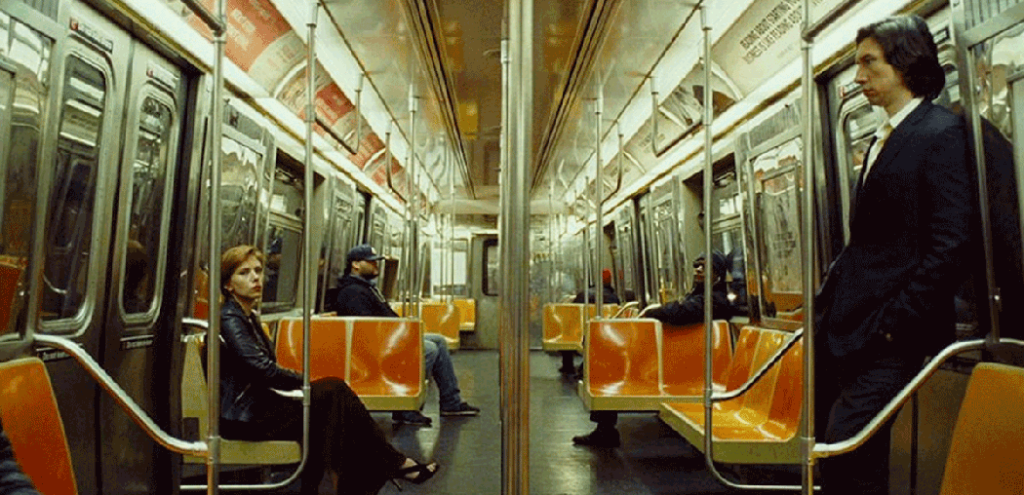
review | Marriage Story
The Oscar-nominated Netflix drama turns out to be a deft character study
by Dennis Burger
January 9, 2020
I’m almost ashamed to admit that this year’s Golden Globes played some part in my awareness of Noah Baumbach’s new Netflix-original film Marriage Story—ashamed because I couldn’t care less about awards ceremonies and rarely base any of my viewing habits on self-congratulatory pomp. I do, on the other hand, care quite a bit about Baumbach’s work. And I’m drawn to him, in part, because his films aren’t predictable. While I’ve loved all of his collaborations with Wes Anderson (especially the delightful Fantastic Mr. Fox), his own directorial efforts have been a little more uneven. For every engaging The Squid and the Whale, there’s been an off-putting Margot at the Wedding. For every mercurial Frances Ha, there’s been a muddled While We’re Young.
But even Baumbach’s failures have been noble failures because he has a singular talent for writing dialogue that’s simply unmatched in our generation. And all of that is on full display in what I consider to be one of his best yet.
Marriage Story stars Scarlett Johansson and Adam Driver as soulmates at an impasse. It’s ostensibly the story of their divorce, territory Baumbach already explored from one perspective in The Squid and the Whale. But to call it a film about divorce would be to miss the point. Instead, it’s about the individual sense of identity that’s often lost in any marriage, but also the intimacy that’s gained in return. That back and forth, give and take, yin and yang ultimately influences all of the film’s themes.
It really isn’t the thematic or narrative heart of Marriage Story that makes it work, though. It’s the characters that drive the film, as well as Baumbach’s gift for crafting dialogue that sounds completely organic and natural to the ear but upon closer inspection turns out to be a masterfully assembled jigsaw puzzle conglomerated from pieces pilfered from two different boxes.
Characters talk past and over one another, they inject non sequiturs and distractions, they leave thoughts dangling and stumble over interruptions, and if you didn’t know better you might suspect that Baumbach is allowing his performers to improvise. He’s not. Every pause, ever “uh,” every clipped and broken sentence fragment is meticulously scripted to keep the flow of what’s actually being communicated between two characters who aren’t really listening to one another unambiguous for the viewer.
It helps, of course, that the film is perfectly cast. It’s seems clear to me that Baumbach selected Johansson and Driver not merely because of their talent, but as much for the audience’s expectations of what they bring to a film. With Johansson, we expect a certain emotional complexity—an ability to convey two contradictory emotions on her face, in her body language, in her vocal inflections. With Driver, we expect a certain caged-animal ferocity—explosions of intensity and frustrated vulnerability. Baumbach plays around with those expectations in wonderful ways, and I hesitate to say more than that.
The one thing I will say about characterization, though, is that Baumbach seems to be going for more universal relatability with this film than with previous efforts. Much as I love his last Netflix original, The Meyerowitz Stories (New and Selected), I’ll admit that as with most of his films, I found its neurotic characters as unrelatable as they were fascinating. It could simply be that I’m from Alabama, where—to paraphrase Julia Sugarbaker—we proudly display our crazy out in the open rather than bottling it up until it boils over, but there’s always been an aloof affectation to Baumbach’s characters that made them seem more than a little alien to me.
That’s far from the case with Marriage Story, save for a few supporting characters whose affectations are more of a contrived West Coast sort that I at least understand. At its heart, though, the two leads are less defined by their neuroses than by their sympathetic human failings.
If all of the above makes Marriage Story seem like the sort of film that could just as easily be viewed on a laptop or mobile screen, that couldn’t be further from the truth. Cinematographer Robbie Ryan gives the characters room to breathe, opting for wide shots throughout except when closeups are needed for punctuation. It’s a film that begs to be seen on the largest screen in the home, and one that rewards quality of presentation thanks largely to its distinctive, filmic look.
Shot on Kodak Vision3 200T and 500T film stock in an increasingly uncommon 1.66:1 aspect ratio, Marriage Story is an analog cinephile’s dream. The organic grain structure and photochemical idiosyncrasies of the film stock give the film a unique character that’s missing from so many modern, digitally captured movies.
What surprised me, though, is that Netflix’ UHD/HDR presentation—at least by way of my Roku Ultra—is more than up to the task of delivering this unabashedly analog imagery pretty much perfectly intact. Much as I love this modern era of high-efficiency, relatively low-bitrate streaming, I’m not blind to its limitations. One expects a few seconds here and a few seconds there with a little light banding or digital noise. Indeed, there is a handful of shots in Marriage Story—one in particular featuring characters positioned against an inconsistently lit cream-white wall—where I leaned forward to judge just how prominent the banding would be. And yet I saw none.
Ask me to find a visual flaw in the presentation and I might point to one scene in which the structure of the film grain and the textures of an onscreen object interfere a little and may have been presented a little less noisily in a much higher bandwidth download or on disc. But without being able to do direct A/B comparisons, I’m just guessing.
That aside, Netflix presents Marriage Story beautifully, preserving the slight golden cast of the film stock, as well as its overall low-contrast aesthetic. It’s important not to confuse contrast and dynamic range here, as the HDR does leave a lot of room between the not-very-black blacks and the never-very-intense highlights, allowing us to peer deeper into shadows and appreciate the subtle differences between, for example, two black pieces of clothing dyed differently and aged asymmetrically.
The sound mix also hinges on subtleties. Mostly mono, the barely-surround soundtrack makes another strong case for why the center channel is the most important speaker in your sound system. The mix does spread to the front left and right speakers occasionally, mostly to give width to Randy Newman’s sparse-but-poignant score, but also, creatively, to give some space to the often dense and chaotic cacophony of dialogue.
Netflix, it seems, is somewhat under siege as of late, with some criticizing the inconsistent quality of its original offerings and others (yours truly included) musing on how the service can maintain any semblance of identity in the face of new competitors like Disney+ and the upcoming HBO MAX and Peacock.
If the company keeps supporting the creation of films like this, though, it can count on my $15.99 every month. And if Noah Baumbach is going to keep maturing as a filmmaker and delivering consistently amazing character studies like The Meyerowitz Stories and now Marriage Story, he’s going to convert me into an unapologetic and unreserved champion.
Dennis Burger is an avid Star Wars scholar, Tolkien fanatic, and Corvette enthusiast who somehow also manages to find time for technological passions including high-end audio, home automation, and video gaming. He lives in the armpit of Alabama with his wife Bethany and their four-legged child Bruno, a 75-pound American Staffordshire Terrier who thinks he’s a Pomeranian.
PICTURE | Netflix’ UHD/HDR presentation is more than up to the task of delivering the movie’s unabashedly analog imagery pretty much perfectly intact
SOUND | Hinging on subtleties, the mostly mono soundtrack makes another strong case for why the center channel is the most important speaker in your sound system
© 2025 Cineluxe LLC


